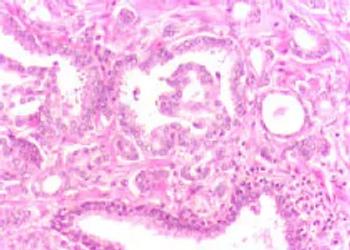
Solving the Mystery of Why Half of Melanoma Patients Relapse After Immunotherapy
Key Takeaways
- Over half of melanoma patients relapse after initial immunotherapy success due to DNA changes in tumor cells.
- Genetic alterations in tumors disable self-destruction mechanisms, leading to treatment resistance.
UCLA study reveals why melanoma returns after immunotherapy: tumors delete genes triggering cell death while copying survival genes. This understanding could potentially enable new combination treatments to prevent resistance.
More than half of melanoma patients whose cancer initially responds to immunotherapy will eventually see their disease return, a puzzling pattern without clear answers. New research points to a common culprit: sweeping DNA changes that help tumor cells sidestep self-destruct signals sent by the immune system.
The
“Patients who initially respond to immune checkpoint inhibitors (ICIs) often relapse,” the study authors wrote. “In primary resistance, patients do not respond to ICIs from the outset of treatment. Adaptive resistance may manifest as transient objective responses or disease stabilization, providing a bridge to acquired resistance.”
This class of medicines, called checkpoint inhibitors, takes the brakes off T cells. They have transformed melanoma care with durable remissions, moving to front-line treatment. FDA-approved therapies include Keytruda (pembrolizumab), Opdivo (nivolumab), Yervoy (ipilimumab), Opdualag (nivolumab and relatlimab) and Tecentriq (atezolizumab).
While these drugs can work impressively at first, genetic changes lower the tumor’s sensitivity to being killed, setting the stage for relapse after months or years. Understanding why relapse happens for some patients could provide a path for overcoming this change.
Researchers discovered that melanoma tumors develop large-scale changes in their DNA that systematically disable the cellular machinery for self-destruction. These genetic alterations work like a defense system, erasing multiple genes that would normally cause cancer cells to die when targeted by immune cells while making extra copies of genes that prevent cell death.
The team compared tumor samples from melanoma patients, taken both before treatment and again when cancer returned after six months or more of positive responses to immunotherapy drugs. The relapse trigger was due to tumors accumulating several DNA changes at once. Some tumors showed deletions in as many as 10 genes that normally trigger cell death, while others made additional copies of genes that block this process.
To confirm these DNA changes directly cause treatment resistance, researchers exposed human melanoma cells to immune cells engineered to kill cancer. The surviving melanoma cells displayed the same types of genetic alterations found in patient tumors. When scientists artificially restored the deleted genes in these resistant cells, the cancer cells became vulnerable to immune attack again.
The research team also treated mice with melanoma using immunotherapy drugs similar to those given to patients. Tumors that initially shrank but later regrew showed identical genetic patterns. Advanced sequencing revealed that some resistance-causing DNA variants existed in small cancer cell populations before treatment started, while others appeared during therapy. Both types expanded as treatment continued.
The research suggests that targeting cancer cells’ ability to avoid self-destruction during immunotherapy might stop resistance before it develops. Understanding how tumors evolve late-stage resistance could help doctors develop combination strategies to prevent relapses.
Skin cancer affects approximately 1 in 5 Americans during their lifetime, making it the most common cancer in the United States. According to the
Newsletter
Get the latest industry news, event updates, and more from Managed healthcare Executive.

















































